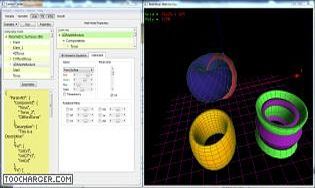
So, why don’t do it on my own? I ordered two Raspberry Pis, which seemed like a perfect fit for a media center and a LED controller because of the built in SPI bus interface. After some research, I decided that using SMD LED strips with WS2801 chips would be the best match for a Raspberry Pi controller. Furthermore SMD strips are quite easy to mount, because of the adhesive tape on the back of the strip. I’ve ordered following parts to complete the installation from boxtec.ch 1 x We’ll setup the necessary hardware first. RGB LED Strip – Pigtail Connector 20cm (pair)īreadboard Jumper Wire m-m (65-cable pack)ġpin dual female jumper wire (300mm) 20pcs.Ģpin dual female jumper wire (300mm) 5pcs. Alternatively, you could use just one Raspberry Pi, which will act as the LED controller and the media center. Regarding the spec sheet, the 5 V LED strip consumes approx. To calculate the total power consumption, we need to measure how many LEDs we can put on the TV’s back. I needed 3.8 m of the SMD LED strip for my 55 inch TV. Total power consumption: 3.8 m LED strip x 1.5 A + 1.0 A Raspberry Pi Model B = 6.7 A / 33.5 W.įortunately, the Raspberry Pi requires also 5V, so you’ll be able to power up the strip and the Pi with the same 5V power supply. Just don’t forget to order a DC Power Jack Adapter for easy connectivity of the at least 7 A / 35 W – 5V power supply.
MELTYS MATHMOD TUNING SOFTWARE
LED strip solderingĪs a Software Developer, I’m not an expert in soldering but I tried to do my best.
MELTYS MATHMOD TUNING TV
For easy replacing of a broken LED strip or moving the installation to another TV connect the stripes with pigtail connectors.Ĭut the strip into 4 pieces that match your TV dimension. WS2801 LED strips have always four connectors.

In my case with those pinouts:īe careful, don’t twist those between the pigtails! There’s also an arrow on the strip, which marks input / output. Make sure you’re able to connect the strips from input to output with the pigtail connectors. It’s easier to solder the connectors to the fine SMD if you put some soldering to each of the four joints in advance. Finish it up with a heat shrink, for more flexibility use non-adhesive heat shrink tubes. It’s barely easy to mount the strips because we chose SMDs, just use the adhesive tape and you’ll be fine. It’s essential that you start mounting from the bottom right, seen from the back of the TV with the arrow on the strip pointing to the right. Later, you’ll connect from the GPIO from the RPI directly to this input of the strip. Then go ahead counter clockwise, connecting the output of the first strip to the input of the second strip and so on until you reach the bottom left. The output of the last strip is left empty, so the strips are not connected in a loop. Wire the LED’s up as shown in the following diagram created by Philip Burgess. Please note, the diagram shown, is for the Rpi revision 1.0. This could slightly change with later revisions. Make sure the input +5V/GND connectors of the strip and the Raspberry Pi power connectors are directly connected to the DC Power Jack Adapter (DC Jack). There’s no need for the Pi’s micro USB port anymore.

I’d suggest using Breadboard Jumper wires for proper connections to the Pi’s breakout board. Leave the output connectors of the LED strip as they are. Prototyping: All wires connected to the Raspberry Pi.įinal outcome: Raspberry Pi in black enclosure and power supply wired up.
MELTYS MATHMOD TUNING HOW TO
In this section I’ll show you how to setup two different applications on the Raspberry Pi to control the LEDs.

You have to chose one of them, I’d recommend Hyperion for various reasons.


 0 kommentar(er)
0 kommentar(er)
